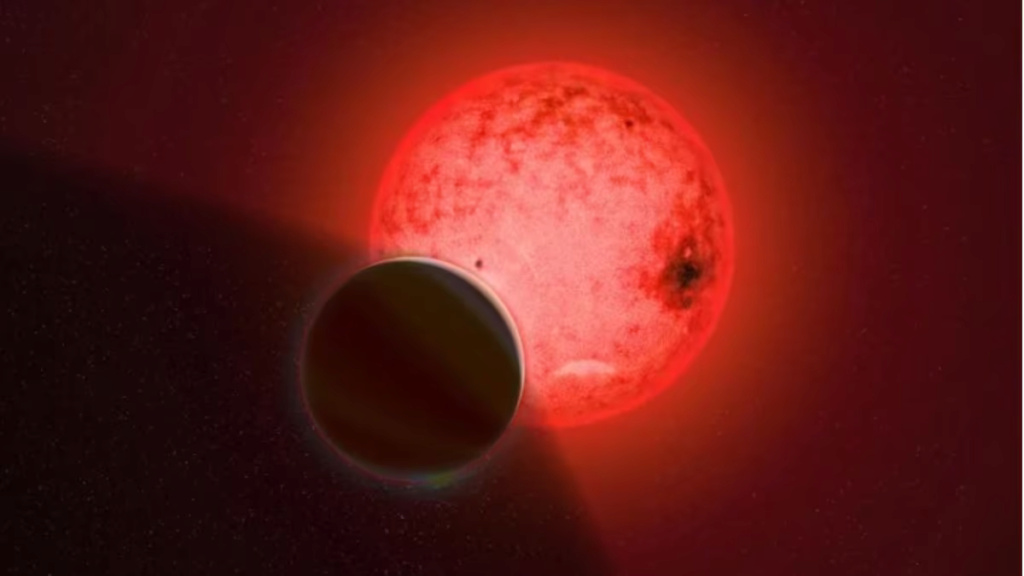!The discovery of a mysterious planet outside the solar system, breaking the rules of planet formation

Astronomers have discovered a gas giant exoplanet called TOI 5205b orbiting a relatively young star, which is rare.
The size of the planet is much larger than should be possible given its conditions, leading the researchers to conclude that it is a "forbidden" planet.
This discovery could expand our understanding of planetary formation and lead to new discoveries in exoplanet research.
The gas giant planet, TOI 5205b, was first identified by NASA's Transiting Exoplanet Survey Satellite (TESS), and scientists confirmed its existence and studied its properties. TOI 5205b is classified as an M dwarf or a red dwarf, and it is one of the young, cool and most common stars in the galaxy.
While it is common to find exoplanets orbiting red dwarfs, it is considered rare to find gas giants orbiting red dwarfs, let alone orbiting low-mass M dwarfs. TOI 5205b is massive compared to its host star, blocking about 7% of its light when passing in front of it.
This finding is surprising because it contradicts our understanding of planetary formation. According to current models, the planets are thought to be composed of disks of gas and dust called protoplanetary disks. The gas giants require the formation of a core of rocky material before the gas can be swept up to form the planet. However, in this case, it seems unlikely that there was enough rocky material in the disk around TOI 5205b to form the initial core. Even if all the material on the disk came together to form one planet, it would not be enough to form a gas giant of this size. This led the researchers to conclude that TOI 5205b should not exist and that it is a "forbidden planet".
Principal investigator Shubham Kanodia of the Carnegie Institution for Science suggests that there may be much more dust in these disks than previously thought, or that there are some aspects of planet formation not yet understood. The researchers propose to use the modern James Webb Space Telescope to explore the planet further.
Published in The Astronomical Journal, the discovery of TOI 5205b is intriguing and may help expand our understanding of planet formation. The discovery could also lead to new discoveries in exoplanet research, as scientists continue to investigate the mysteries of our universe.
Source: websites

